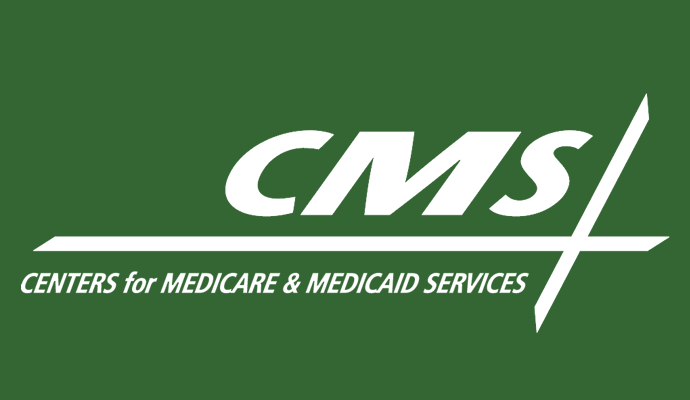CMS Proposes Quality Payment Program Updates in CY23 PFS Rule
In addition to physician reimbursement cuts, CMS included changes to the Quality Payment Program in the CY 2023 Medicare Physician Fee Schedule proposed rule.

Source: CMS Logo
- In its recently released calendar year (CY) 2023 Medicare Physician Fee Schedule (PFS) proposed rule, CMS proposed Quality Payment Program (QPP) changes to the Merit-based Incentive Payment System (MIPS) and Advanced Alternative Payment Models (APMs).
Merit-based Incentive Payment System
The agency has proposed 194 quality measures for the 2023 MIPS performance period. This reflects nine new measures, including one administrative claims measure, one composite measure, five high priority measures, and two patient-reported outcomes measures.
CMS has proposed to expand the definition of a high priority measure to include health equity-related quality measures.
The agency also announced the removal of 15 quality measures and the partial removal of two quality measures that are duplicative, topped out, or have limited adoption. In addition, the rule includes proposed changes to 75 existing MIPS quality measures.
CMS included four new improvement activities focusing on facilitating data segmentation, improving care for LGBTQ+ patients, reducing language and communication barriers, and increasing COVID-19 vaccination among practice staff.
READ MORE: Providers Face Cuts in Medicare Physician Fee Schedule Proposed Rule
The rule also proposed modifications to five existing improvement activities and the removal of six improvement activities.
Regarding the performance threshold for the 2023 performance year, the agency plans to continue using the mean final score from the 2017 performance year to set a threshold of 75 points. The data completeness threshold would remain at 70 percent for the 2023 performance period but increase to 75 percent for the 2024 and 2025 performance years.
The agency proposed establishing a maximum cost improvement score of 1 percentage point out of 100 percentage points for the cost performance category starting with the 2022 performance period.
Under the promoting interoperability category, CMS introduced several potential updates.
The agency proposed discontinuing automatic reweighting for nurse practitioners, physician assistants, certified registered nurse anesthetists, and clinical nurse specialists. In addition, APM Entities would be able to report Promoting Interoperability data at the APM Entity level rather than the individual or group level.
READ MORE: CMS Plans to Reweight 2021 MIPS Cost Performance Category
The rule also proposed making the Query of Prescription Drug Monitoring Program (PDMP) measure required during the 2023 performance period and expanding the measure’s scope to include Schedules III and IV drugs.
CMS altered the maximum points for Promoting Interoperability measures, including decreases for Health Information Exchange (HIE) and Provider to Patient Exchange measures and increases for Public Health and Clinical Data Exchange measures.
MIPS Value Pathways
CMS also introduced updates to the MIPS Value Pathways (MVPs) in the CY 2023 PFS proposed rule.
The agency has proposed five new MVPs for the 2023 performance year: Advancing Cancer Care, Optimal Care for Kidney Health, Optimal Care for Patients with Episodic Neurological Conditions, Supportive Care for Neurodegenerative Conditions, and Promoting Wellness. The rule also included revisions to the seven previously established MVPs.
CMS proposed changes to subgroup participation as well. For example, the agency proposed to use the first segment of the MIPS determination period to determine clinician eligibility for registering as a subgroup. When reporting as a subgroup, the agency would calculate and score administrative claims measures at the affiliated group Taxpayer Identification Number (TIN) level.
READ MORE: Top Challenges of the Merit-Based Incentive Payment System
Regarding subgroup reporting, subgroups would be assigned the affiliated group’s score for each selected population health measure, outcomes-based administrative claims measure, and cost score.
“We anticipate that subgroup reporting would allow CMS to capture clinician performance at a more granular level, provide performance feedback to clinicians relevant to their scope of care provided, and provide patients better data to make informed decisions about their care needs,” a QPP proposed rule fact sheet stated.
Advanced Alternative Payment Models
The proposed rule included policies to reduce burden and facilitate participation in APMS, including permanently establishing the 8 percent minimum Generally Applicable Nominal Risk standard for Advanced APM. This policy is set to expire in 2024 and specifies that Advanced APMs require more than a nominal amount of financial risk.
Additionally, CMS proposed to apply the Medical Home Model 50 eligible clinician limit to the participating APM Entity rather than the parent organization. The agency plans to identify the clinicians in the APM Entity using the TIN/NPIs on the entity’s participation list.
Requests for Information
Finally, CMS issued several Requests for Information (RFIs) in the CY 2023 PFS proposed rule to gather feedback on the future of the QPP.
The rule included an RFI on developing and implementing health equity measures for the MIPS quality performance category, the payment gap for QPs and transition to enhanced conversion factor updates, and the development of quality measures that address amputation avoidance in diabetic patients.
Other RFIs centered around incentivizing participation in the Trusted Exchange Framework and Common Agreement (TEFCA), advancing to digital quality measurement and FHIR use in the QPP, and transitioning to individual QP determination.
